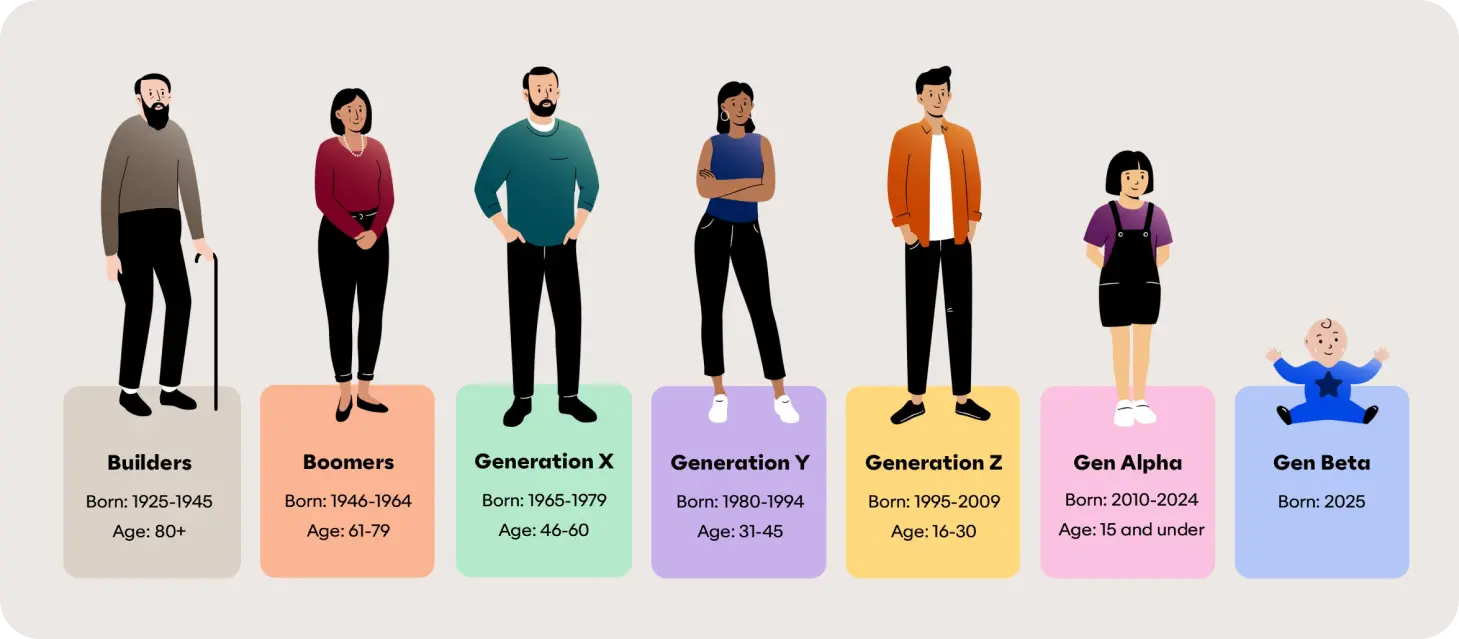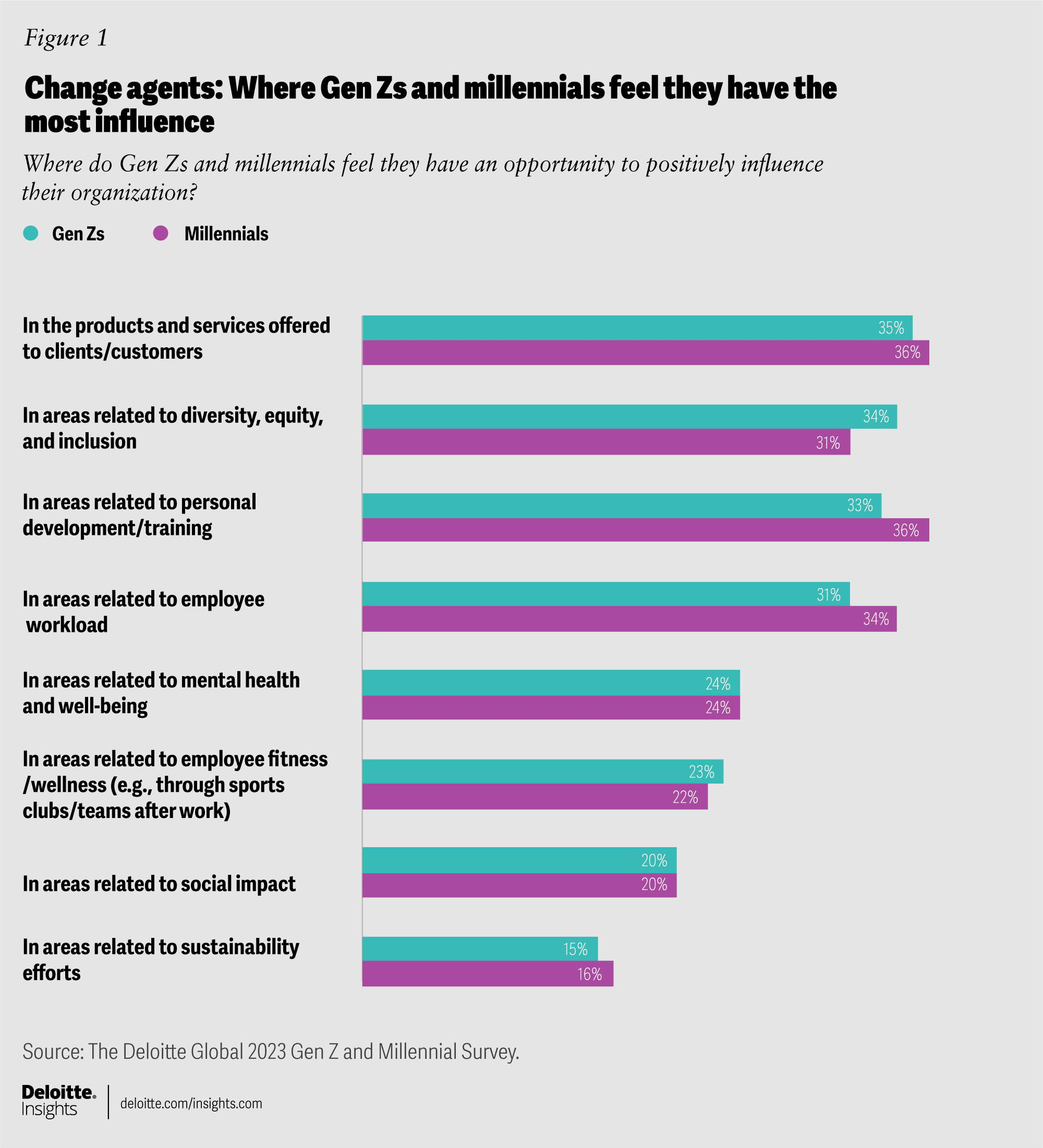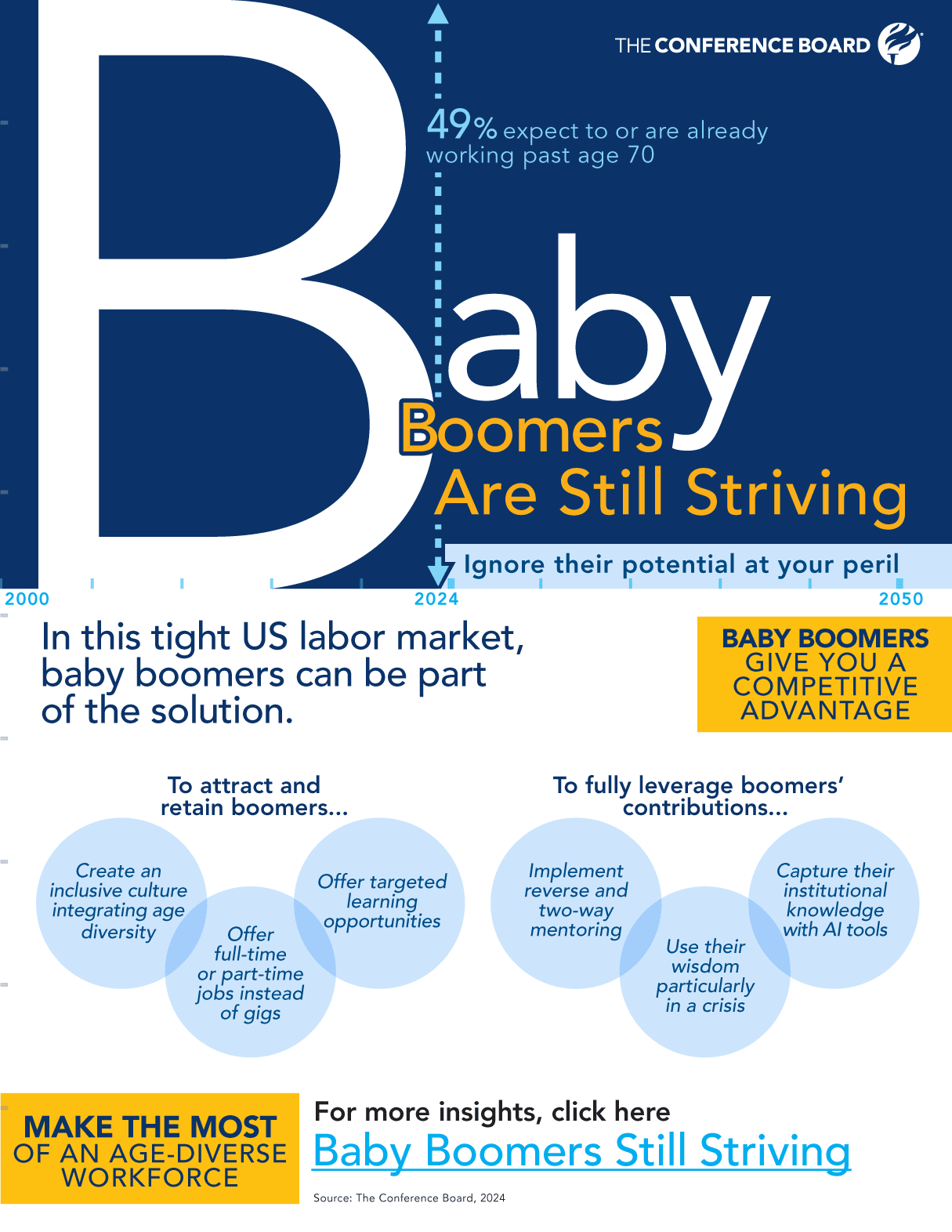
Leading the multigenerational workforce has its challenges, but each generation brings a unique set of strengths to the workplace. Embracing these strengths cultivates generational intelligence, improves communication, and allows employees to do their best work.
Today’s workforce is generally comprised of four generations: Gen Z, millennials, Gen X, and boomers. To best support people in using their strengths to their full potential, start by getting to know the members of your workforce.

Gen Z
A highly diverse and digitally fluent generation driven by purpose, Gen Z is ambitious and wants to make a positive difference in the world. This purpose-driven generation also prioritizes professional development and adapting to new technology.
Many Gen Zers are opting out of climbing the corporate ladder, but most prioritize learning and development. According to Deloitte’s Gen Z and Millennial Survey, 7 in 10 Gen Zers work on developing skills to advance their careers at least once a week.
Their digital fluency and technical savvy are on display with the rise of AI. Fifty-seven percent use GenAI at work for tasks like project management, risk assessment, data analysis, content creation, and more, according to the same Deloitte survey.
Gen Zers want their workplace’s values to align with theirs. According to research by Roberta Katz featured on Stanford Report, climate change, inequality, and racial injustice are a few societal problems Gen Z wants to fix, and they want their employers to help.
Millennials
Millennials are committed to doing meaningful work. According to Deloitte’s Gen Z and Millennial Survey, 92% say purpose-driven work is important to job satisfaction and well-being.
According to the Center for Creative Leadership, this generation is hardworking, and they know their worth. Millennials want to do good work, they’re committed to their jobs, and they want opportunities to share their ideas. They are also willing to leave jobs that don’t meet their needs for development, compensation, and work-life balance.
Millennials and Gen Z share a desire to influence positive change at work. Deloitte Insights found millennials and Gen Zers are ready to lead change, but they need opportunities.

Gen X
Marked by resilience, collaboration, and a strong work ethic, Gen X contributes a wealth of knowledge and insights, while being highly adaptable, to the workforce.
According to the Generation X in the Workplace Study, Gen X self-reports being teamwork-oriented with strong communication, analytical thinking, and problem-solving skills. These traits allow this generation to act as mentors, trusted advisors, and in many cases, leaders and bosses.
Gen Xers may be independent workers just focused on getting the job done. Efficiency overrules working long hours for this generation, according to BetterHelp.
Also called the sandwich generation, many Gen Xers are in the unique position of caring for their children and aging parents. This responsibility perhaps increases the desire for work-life balance and flexibility. As Gen Xers strive for balance, they spend the workday invested in accomplishing tasks, and flexibility enables them to be more engaged and productive on the job.
Boomers
With a vast wealth of knowledge, boomers are team-oriented, positive about their jobs, and dedicated to loyalty, but may have workaholic tendencies, according to a report by Marsh McLennan Agency. Their strong work ethic was shaped by societal change and challenges.
As boomers retire, many take with them their wealth of knowledge. Boomers are perfectly positioned to mentor less experienced employees to preserve vital knowledge. Empowering boomers to contribute to knowledge transfer and succession planning ensures their knowledge, work, and skills are passed to fellow employees.
The Conference Board recommends embracing boomers’ institutional knowledge and more for a competitive edge.

Supporting Generations
To support employee strengths regardless of their generation, leaders must create positive company culture, strong benefits, and flexibility. While members of each generation have their own preferences and predisposed perceptions, workplaces and leaders that allow employees to use their strengths to their full potential appeal to all ages.